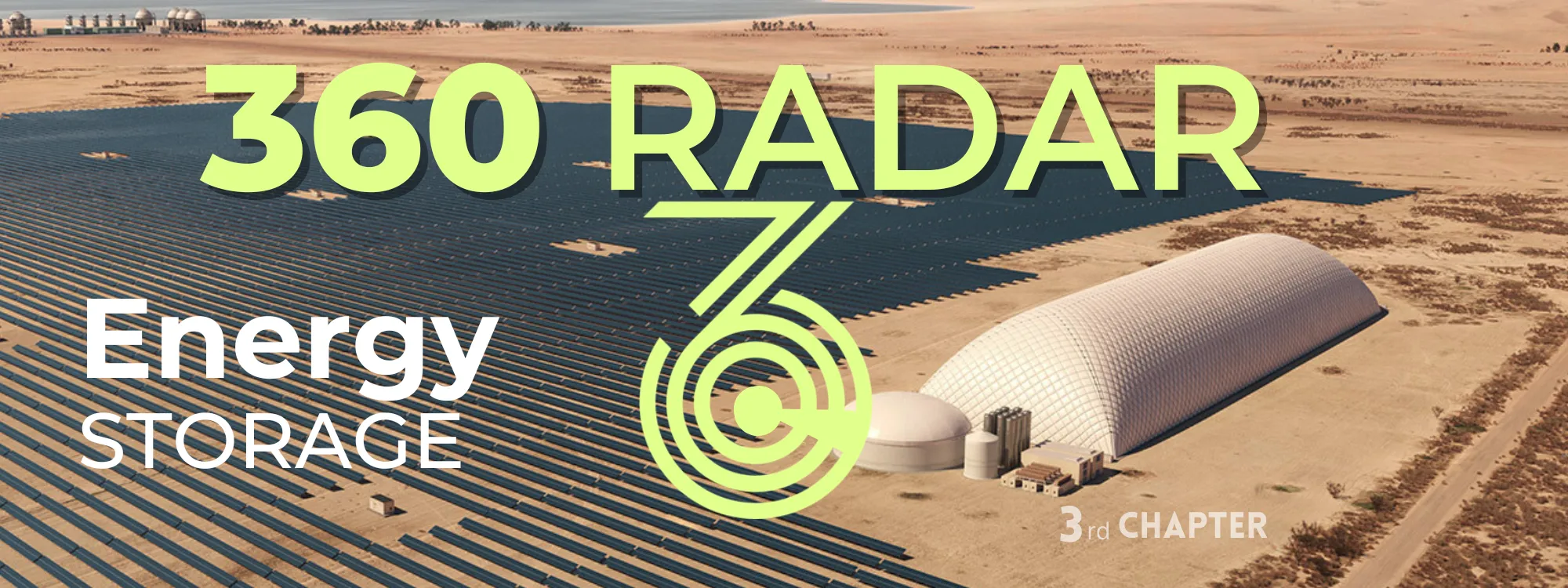

July 3, 2025
As we accelerate the shift to renewable energy, a key challenge emerges: renewables are abundant but not always available when needed. On one hand, solar panels and wind turbines generate power intermittently, on the other hand traditional short-duration batteries (typically 2–4 hours) can only smooth short-term fluctuations. This results in an incapacity to store clean electricity for 8 hours or more and deliver it when demand peaks or generation drops. That’s where Long Duration Energy Storage (LDES) comes in.
Without LDES:
According to the LDES Council Vision by 2040, achieving full deployment of 8 TW of long duration energy storage globally (equal to 13× the current combined installed capacity of solar and wind power in the EU) - including 3 TW for power and 5 TW for heat - will require $4 trillion in investment, while unlocking $540 billion in system cost savings by integrating LDES at scale.
There is no single LDES technology; instead, we’re seeing a rich ecosystem of solutions evolving to address diverse grid needs: from 8-hour discharge systems to multi-day and seasonal storage.
Key technologies include:
Success will depend on achieving low Levelized Cost of Storage (LCOS), long cycle life, and scalable deployment.
To date, the U.S. has led global investments in Long Duration Energy Storage, fueled by powerful policy levers such as the Inflation Reduction Act (IRA), which offers a 30% Investment Tax Credit and additional manufacturing incentives. Over 70% of LDES funding since 2021 has flowed into North American companies, establishing the region as the dominant hub for early-stage innovation and scaling.
In contrast, Europe has accounted for only 11% of total investment volumes, despite ambitious climate targets and growing storage needs. However, this dynamic may be shifting. As macroeconomic conditions evolve and European policy frameworks mature, there’s growing momentum for LDES on the continent.
Several countries are introducing favorable mechanisms such as:
Looking ahead, Europe is well-positioned to accelerate deployment, particularly through coordinated funding, cross-border market integration, and increased utility-scale procurement. In a context of industrial reshoring and energy security concerns, LDES could become a strategic pillar of the European energy transition.
At 360 Capital, we’ve believed in the potential of Long Duration Energy Storage early on. Over the past few years, we have invested in two Italian-born LDES startups: Energy Dome and Sinergy Flow. Both of which are now actively scaling across international markets. These companies are tackling the LDES challenge with differentiated, high-impact technologies built for global grid needs.

Energy Dome’s CO₂-based storage technology delivers a round-trip efficiency of up to 75% and a long asset life. Modular and cost-effective, it is designed for utility-scale applications. The technology is already in commercial rollout across the world.
Sinergy Flow’s Redox Flow Battery technology leverages abundant and safe materials to deliver reliable, long-duration energy storage. By decoupling power and energy, it is ideally suited for 8–24 hour storage needs. The system is designed specifically for stationary, grid-scale applications.
Looking at the size of the opportunity and the urgency of enabling a net-zero grid, we believe Long Duration Energy Storage is not a winner-takes-all market. Instead, it will likely be served by a portfolio of solutions: each optimized for different durations, geographies, and use cases. Whether for daily shifting, multi-day resilience, or seasonal backup, there is room for multiple technologies to succeed across distinct LDES niches. For investors, innovators, and utilities alike, now is the time to build and back the future backbone of renewable power.
Source: McKinsey report 2021 - Net-zero power: Long duration energy storage for a renewable grid (LDES Council, McKinsey & Company)